
Interior
Held in place by thumbscrews, the two side panels attach to the G7 via a notches-and-rail system, also clipping into place at the front. Pleasingly, they're both easy to get on and off, and you'll need to take them off in order to unclip the front panel, which doesn't come fully away from the case thanks to the front panel cabling.In-Win's focus with the interior has definitely been on minimising the use of tools, and saving money in the process. Steel bumps on the motherboard tray act as the standoffs for ATX boards, while a single screw PCI bracket is used to hold all your expansion cards securely in place. Hard drives and optical drives also require no tools, and the end result is an accessories pack which initially feels worryingly empty but in actuality contains all you'll need to build your system.
Elsewhere inside the chassis, the cutout on the motherboard tray for CPU coolers is suitably sized, but the PCI expansion covers need to be snapped out of place, and as such are not reusable. Rails for the PSU do give it some clearance, but there's nothing in the way of vibration dampening material here. The absence of such nice touches is easy to overlook in cheaper cases, however, and all in all the interior has been well machined.
One area where the G7 is lacking is in water-cooling support, as anything other than single radiator based closed loop coolers cannot be housed inside the case. We don't expect much in this arena from budget models, as water-cooling doesn't come cheap, but the inability to house even half height radiators in the roof is a little disappointing, especially as the space there isn't really used for anything else.
Installation of the motherboard and PSU is hassle free. Optical drives require the removal of the front panel, and can be a tight squeeze to slide in. That said, once in place, a simple plastic clip holds them there very securely, and all three external drive bays can be used without interference from the front panel wires.
In-Win's retail website lists the case as having four internal 3.5-inch/2.5-inch drive mounts, but our sample actually came with seven. The difference is explained by a removable internal panel that completes the upper set of three drive bays, which is also found in the In-Win GT1 chassis. We have removed this panel and the three drive trays for our photography so as to match the official specifications, but going by the specifications on UK retailer websites, it appears that customers on these shores at least will receive the full tally of seven internal drive trays.
Standard size hard drives can be installed in the plastic trays, which are designed to bend around the drives and clip into their mounting holes with pins. In practice, it works fairly well, although the drives do occasionally push the pins out of place. The pins are also surrounded by rubber to help minimise vibrations from mechanical drives. The trays can house SSDs too, and these utilise screws, but another SSD can be mounted on top of the drive cage and another on the floor of the case, so a total of six are supported (or nine with the extra three bays).
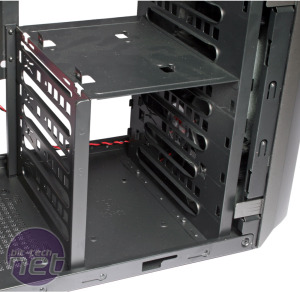
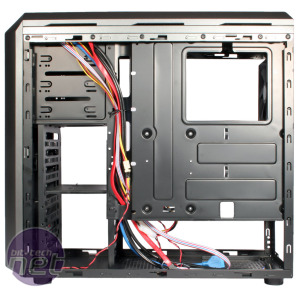
Click to enlarge - A pair of extra SSD mounts can be found on and underneath the drive cage (left) and there's plenty of room for managing cables (right)
Despite the sub-200mm width of the chassis, there's still a healthy amount of room behind the motherboard tray for cable management. The indented channel to the side of the tray is particularly useful, and we also put the empty optical drive bays to good use in this regard. As the motherboard tray isn't fully extended and the cable routing holes lack rubber grommets, your build won't look as clean as it could, but importantly it's easy to keep cables from interfering with airflow. The fan controller also comes pre-connected and is routed nicely for you too, but there's no hole for the EPS12V connection.

MSI MPG Velox 100R Chassis Review
October 14 2021 | 15:04

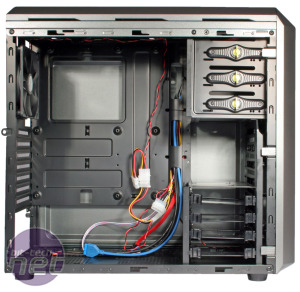
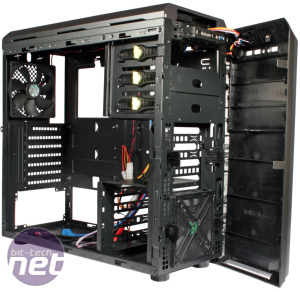
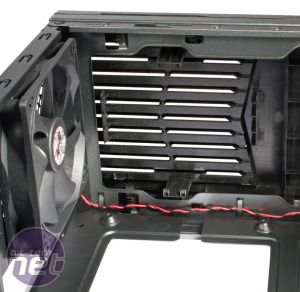
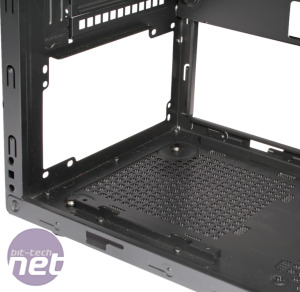
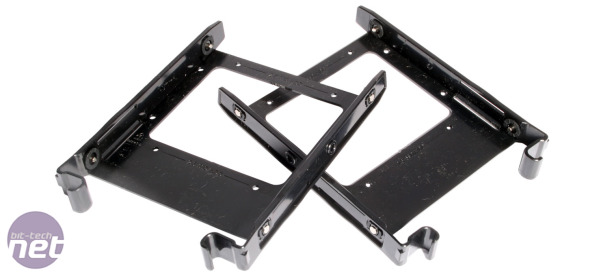







Want to comment? Please log in.